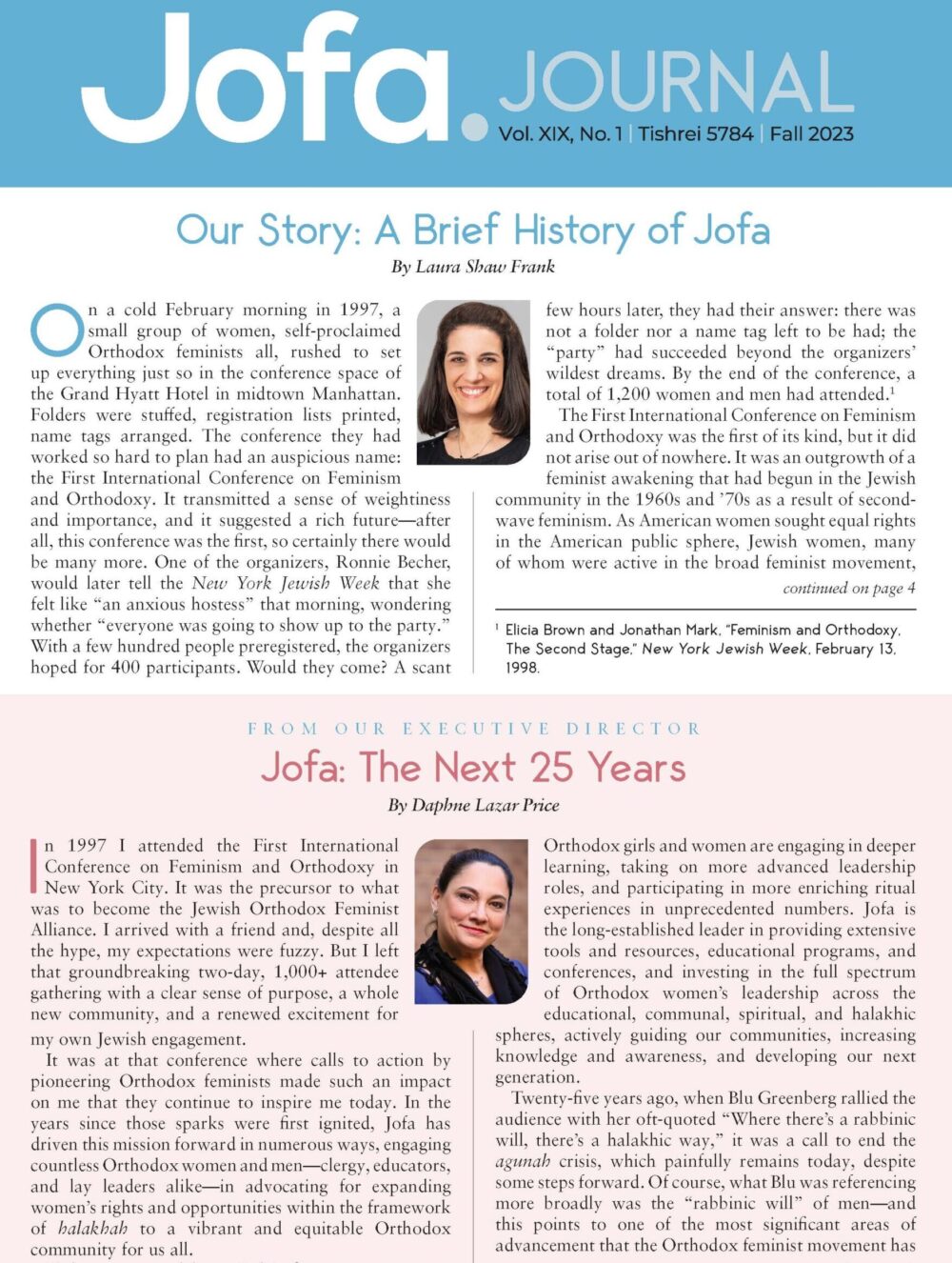Brandeis University Press/HBI Series on Jewish Women, 2015, $40 (paperback), $34.99 (ebook)
By Roberta Rosenberg Farber
The family is an institution most of us take for granted. We grow up in families and hope to create our own. So why has the family become such an important topic in the Jewish community today?
According to the Pew Research Center, “In 2011, 4.2 million adults were newly married, about the same number as in 2010 and sharply lower than the 4.5 million newlyweds in 2008.” The study found that “Barely half of adults (51%) were married in 2011 … compared with 72% in 1960.” In other words, Americans adults (25 and older), if they are marrying at all, are marrying much later: “Marriage increasingly is being replaced by cohabitation, single-person households and other adult living arrangements” (Pew Research Center, November 20, 2012).
American adults are having fewer children; the fertility rate is below the replacement level of 2.1 children per woman. Many couples decide not to have children. Women who have a biological clock and want to have children but have not yet found an appropriate partner are deciding that they cannot wait any longer and may choose to have a child on their own. The traditional path of becoming an adult—marriage and then children—is no longer always followed.
These trends, of course, are not only happening in America,but are prevalent throughout the Western industrialized world. And to the extent that Jews have assimilated the norms and values that underlie these trends, Jewish communities are likewise changing. The way these changes are being played out within the Jewish community is the subject of the important new book, Love, Marriage, and Jewish Families, by Sylvia Barack Fishman, a preeminent sociologist of American Jews, who is a professor of contemporary Jewish life at Brandeis University and co-director of the Hadassah-Brandeis Institute.
The articles in this edited volume explore the changes in love, marriage, and the family as currently practiced and understood among American and Israeli Jews. Including articles on Israeli Jews in this volume makes sense simply because the culture of individualization and personalization is present in both countries, and North American and Israeli Jews together constitute the two major Jewish population centers, comprising 86 percent of the world Jewish population.
Some articles in this volume use quantitative methodologies, but most combine the results of both methodologies or are qualitative. The qualitative emphasis reflects the greater importance given to the individual voice in the social sciences today. As a consequence, the sample size in most of the studies is smaller than might be expected, but there is greater depth and understanding of meaning; a sense of narrative is present. Nearly all the articles supplement secondary source material with data from original studies.
The articles reflect the multi-dimensionality of the subject. Topics range from demographic analyses of Jewish fertility in Israel and America to an overview of gays and lesbians in Israel to the changing images of gender ideals among hareidi groups in Israel to alternative divorce procedures as solutions to the agunah problem.
Fishman’s introduction provides the historical–sociological context for changes in the way love and marriage are understood and expressed in the modern or postmodern context. In the past, the purpose of marriage was to raise a family, meaning that the goal was to be a good spouse and a good parent. Today, in what is called “individualized marriage,” the focus is on achieving personal values. This is consistent with the emphasis on individual satisfaction found in Western industrialized countries like the United States and Israel. The fact that 90 percent of American Jewish men will be married by the time they are 45, and American Jewish women when they are over age 50, is taken as a sign that traditionalism does indeed endure, even when compared with earlier times when nearly universal marriage was achieved well before Jews reached age 30.
The book has four sections: Love, Sexuality, and Personal Choice; Family Transformations; Marriage and the Law; and Backlash and Reaction. Each of these sections contains fascinating articles about the transformations in the way we understand and practice gender, sexuality, marriage, and family. Although all the articles offer fascinating insights, I personally found it encouraging to note that, contrary to the trends brought about by the individualization of norms, values, and behavioral expectations in postmodern societies, Daniel Parmer, a research associate at the Cohen Center for Modern Jewish Studies at Brandeis University, offers new “evidence to support the counter-narrative claim that marriage remains a relevant and highly desirable form of family formation amid a changing landscape” (p. 33).
Ideas that specifically caught my interest include Rachel S. Bernstein and Fishman’s reference to the practice of Judaism in the home as “the third shift” for Jewish women. This concept is an extension of Arlie Hochschild’s designation of the housework that awaits women when they return home from their paid work as the “second shift.” Sergio DellaPergola attributes fertility rates in Israel, which are the highest among the Western industrialized countries, to Israel’s being generally supportive of family life culture. He attributes this to the phenomenon that Israeli Jews continue to see having children as a national duty to replace the Jews lost during the Holocaust. The article by Tehilla Blumenthal provides an insightful and informative exploration of issues raised in the decision-making process by unmarried women to become mothers. She captures the need these women feel to become mothers, an action largely supported in pro-natal Israel, but not as positively viewed in America. These are but a few of the fascinating and valuable facts and ideas that I gleaned in this excellent volume. The variety of subjects explored indicate the multiplicity of concerns to be examined and taken into consideration in an analysis of the Jewish family in contemporary times.
As the primary institution for socializing the next generation, families provide the place in which behavioral norms, values, and mores are transmitted and the people youngsters mimic and from whom they learn. In other words, it is through families that Jewish behaviors are most effectively transmitted from generation to generation—and so, yes, it is essential that we understand contemporary trends and their impact on Jewish life. Nothing is more basic to the development and maintenance of Jewish communal life and personal identity than patterns of marriage and childrearing. It is thus difficult to think of a more timely and pertinent topic than that explored in Fishman’s excellent book.









